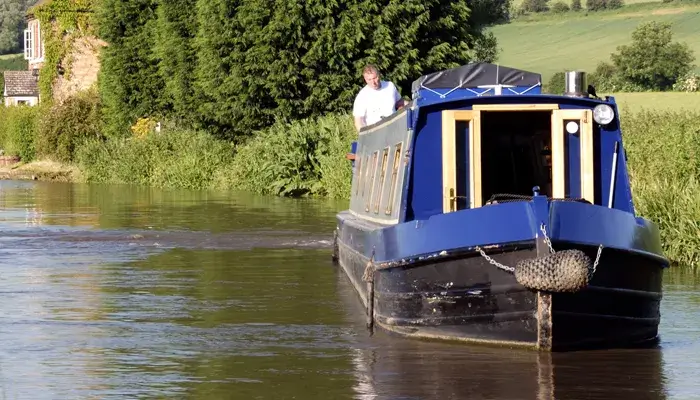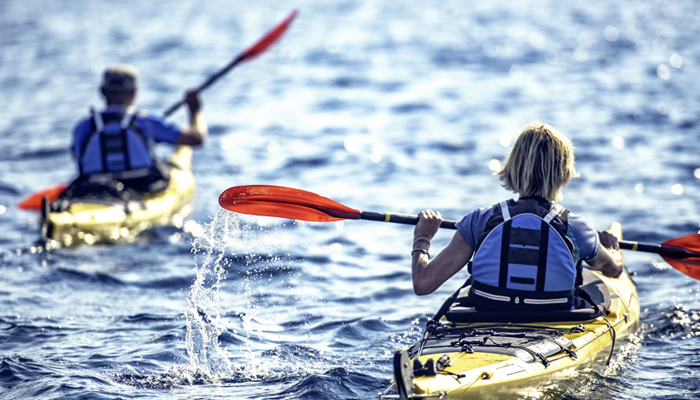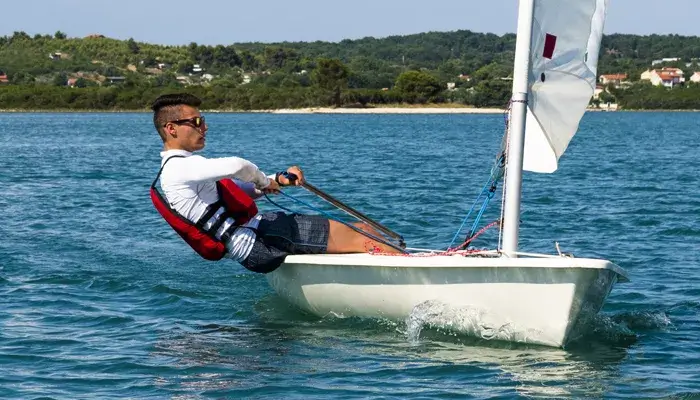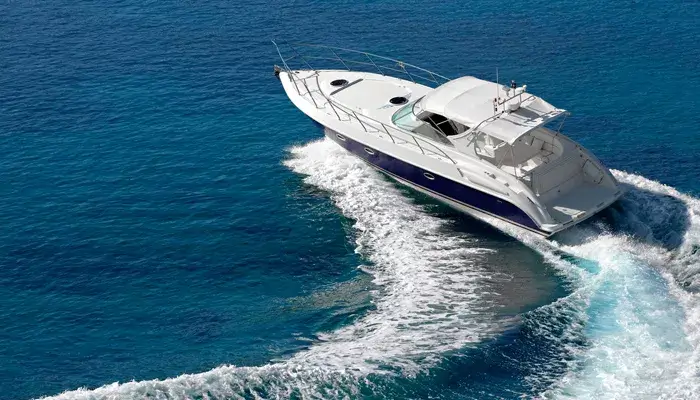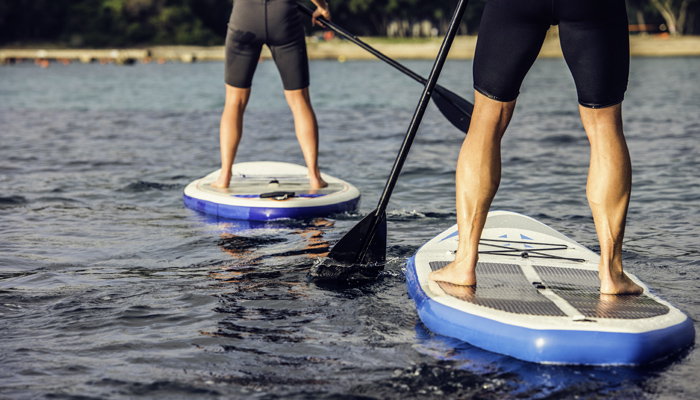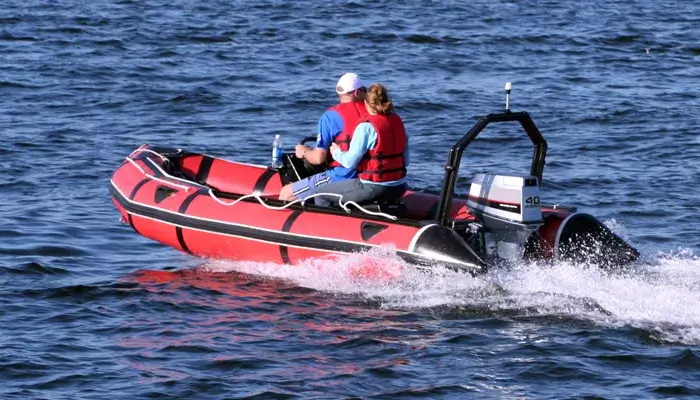A Beginner's Guide to Dinghy Sailing
If you are keen to start sailing dinghies, then this article will help you with some of the basic information you need to get started before you commit to buying a boat. Written by us and the team from Safe Skipper app, find out all you need to start out with your first dinghy.
If you are new to sailing and want some tips and advice on how to get started, then we hope you will find this introductory article useful.
What are the different types of sailing boat?
There are many different types and sizes of sailing boat available for people of all skill levels, ranging in price from a few hundred pounds to thousands. This can be bewildering for those with little or no boating experience who are keen to take up sailing.
In broad terms, you can divide sailing boats into three categories: sailing dinghies, keelboats and yachts.
-
A sailing dinghy is a small, open sailing boat with a shallow draft and no fixed keel.
-
A keelboat is a larger open boat with a fixed keel and a deeper draft.
-
A yacht is a larger sailing boat, usually with an inboard engine and a cabin for accommodation.
How to start sailing
Most sailors would agree that the best way to get into sailing is to begin with dinghy sailing. The most important thing to do is to get some training and learn the basics from qualified instructors. The ideal way to do this is to join a sailing club nearby which runs RYA training courses.
As with many sporting activities, if you start when you are young then you will be more likely to learn quickly and develop the basic skills that become second nature and stay with you for life. If you start as an adult, the good news is that you can find training courses suited for both young and old.
Be realistic about the type of sailing dinghy you can handle as a beginner. You will learn more and have lots of fun by starting with a dinghy that is easy to handle and forgiving if you make mistakes.
Basic sailing skills

Don’t expect to learn everything on day one. In fact most sailors would agree that you never stop learning and can continually improve your sailing skills. Learning the basics will mean understanding how to assess the wind and weather, how sails work, how to rig and handle a boat, how to launch and land, the rules of the road, use of safety equipment, how to cope with a capsize and how to recover a man overboard. If you are sailing in tidal waters, then it is also important to understand about tides.
Royal Yachting Association
The RYA (Royal Yachting Association) is the sport's governing body for sailing and there is lots of advice on getting started and advancing your skills all the way to professional level in both small boat and large boat sailing. The RYA website is a good place to do some initial research about the various courses on offer and they will help you find your nearest training centres. Here are some of the benefits of what the RYA can offer you:
-
Try sailing for free - there are sailing events across the country where you can have a go at sailing for free.
-
The RYA will put you in touch with your local sailing clubs.
-
The RYA’s Youth Sailing Scheme consists of 4 courses for beginners followed by 5 advanced modules.
-
The National Sailing Scheme (for adults) provides an excellent way to master both basic and advanced skills, beginning with a series of 2 day courses and progressing to a series of advanced skills.
-
The RYA Sailability scheme is designed to help those with disabilities get on the water.
Find out more on the RYA website.
UK sailing clubs
The UK has a large network of sailing clubs, both around the coast and on rivers, lakes and reservoirs. A sailing club:
-
Provides training, most have a variety of training boats.
-
Introduces you to people with similar interests and encourages sailing in company.
-
Provides a safe place to store your dinghy and equipment.
-
Will have a suitable place to launch and land.
-
Provides safety boats back up in case you get into difficulty.
-
Provides a network for buying and selling second hand boats and gear.
Ideally, it is a good idea to find a local sailing club that has a number of different types, or classes, of dinghy. While most clubs welcome new members, it is worth visiting several in your area to find one that will be best suited to the type of sailing you are interested in which can be broadly divided into cruising and racing.
How to hire a dinghy
Most larger clubs have a range of different dinghies for hire which you can try out. Prices vary from £20-£50 per day unaccompanied but if you are a complete novice then they will arrange a skipper to accompany you at extra cost.
Clothing to wear when sailing

If you want to sail in all weathers, then dinghy clothing can be expensive, but if you are starting in the summer months, a splash suit, dinghy boots and sailing gloves are a good starter kit. It is also advisable to get a wetsuit suitable for summer wear. The best dinghy clothing is warm, waterproof and lightweight but comes at a price. Ultimately, this is the kit you will want to buy and will make the whole sailing experience much more enjoyable.
The most vital piece of kit is the buoyancy aid and this should be of good quality and suitable for your size and weight.
The types of sailing dinghy
-
Racing dinghies
A typical coastal club might include a cadet fleet with a number of racing classes, from Optimist and Mirror to Topper, Pico, RS Feva, Laser and International 420. Experience with these dinghy classes paves the way for more challenging racing dinghies such as the Merlin Rocket, Solo, RS 200, RS 400, RS 800 and International 14.
-
Cruising dinghies
Some clubs have family friendly dinghies available for those who want to cruise rather than race. These may include boats like the RS Vision, Laser 2000 and Wanderer. An all round dinghy that has proved deservedly popular for decades is the Wayfarer, which many clubs use for training as well as racing and cruising.
Buying a dinghy
Before you start searching for a boat it is a good idea to consider the following:
-
If you are new to dinghy ownership, do you know someone who can share their experiences with you?
-
Do you want to be able to sail singlehanded or with a crew?
-
Are you going to buy new or used? There are pros and cons for both.
-
What is your budget? Remember to factor in purchase plus maintenance costs.
-
Is it best to buy through a broker or privately?
-
Do you have enough sailing experience for the type of dinghy you have in mind?
Once you have a clear idea of the type of dinghy you are looking for and have a budget in mind, then in many ways the search becomes easier. The best place to do this in the early stages is by searching local sailing club websites as well as the online marketplaces. Most online marketplaces enable you to refine your search to suit your requirements and some have advanced search features which will notify you if a boat matching your search criteria comes on the market.
Visit the boat shows if you can, not only to look at the boats, but talk to the people working in the boating industry - designers, manufacturers, finance people, the training schools and more. Most will happily offer their advice at these shows and are used to doing so. There are many boat shows held around the UK during the year, the largest being London (every January) and Southampton (every September).
It is also advisable to talk to a few brokers in your area as they will be able to help guide you through the boat buying process. Most are happy to offer advice and can show you round boats in your price range, providing you have made appointments in advance.
In summary
-
The more background boating knowledge you can build up the better
-
Join a sailing club that offers RYA training
-
Learn the basic sailing skills before you buy a boat
-
Choose the right type of dinghy to suit your needs and experience
-
Work out your budget, including running costs
-
Visit the boat shows
-
Talk to brokers; most will offer advice and help guide you through the process
About the author
Adam Summersby is a respected leader with 11 years’ varied experience in niche personal and commercial lines insurance, including caravan, site operators and excess reimbursement, with proficiency in leadership, sales and account management.
Date: October 11, 2016
Category: Boat







